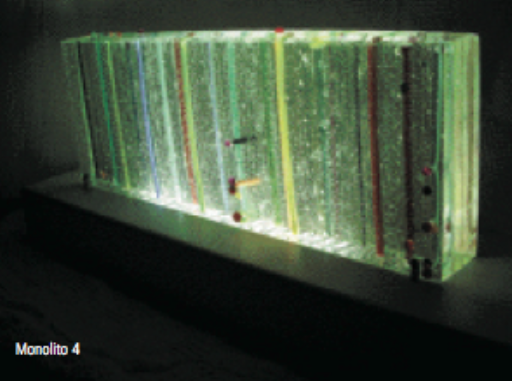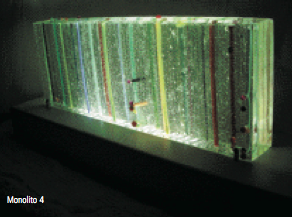Ana María Nava
Galería 700, Maracaibo
Ana María Nava’s (Venezuela, Edo. Zulia, 1962) work is featured as a fresh proposal related to the use of glass in art. Nava utilizes glass as the basis of her work, but her aim is to apply it to other non-conventional solutions. We are not referring to containers that have a practical use, or to figuration. Her colors fuse in a transparent parallelepiped, with colorful lines and dots forming part of an unprecedented drawing. Using natural or artificial light, the works generate a new spatiality and take on a leading role. The artist calls their volumetric values, but also to leave aside the narrative references of the past. The monolith stands on its own as a plastic solution and attracts the indifferent gaze of the viewer.

The artist can also join together several irregular fragments – with pre-established patterns and design – to produce a whole that is malleable and constitutes a ductile and translucent mesh. This does not render it fragile; rather, it is slightly warped and self-supporting. In this respect, she behaves as an artisanal weaver creating her own supports. Her training as an architect helps her to devise other supports that may facilitate more contemporary reflections, forget- ting the traditional two-dimensional plane and using glass merely as support.





